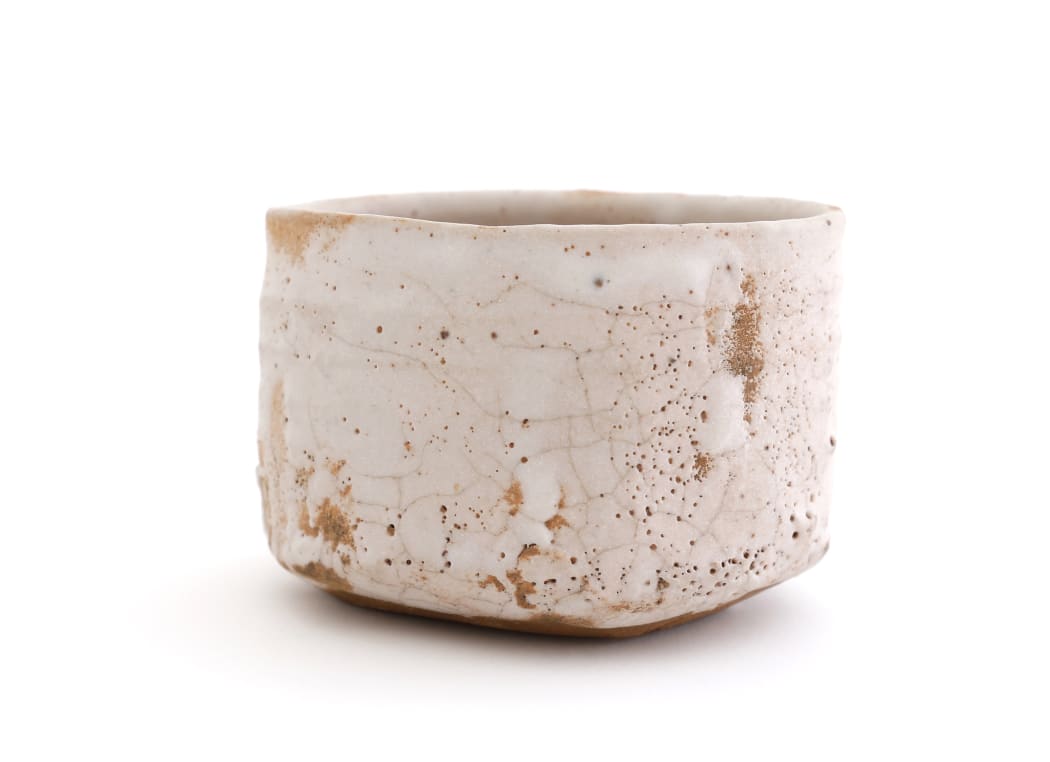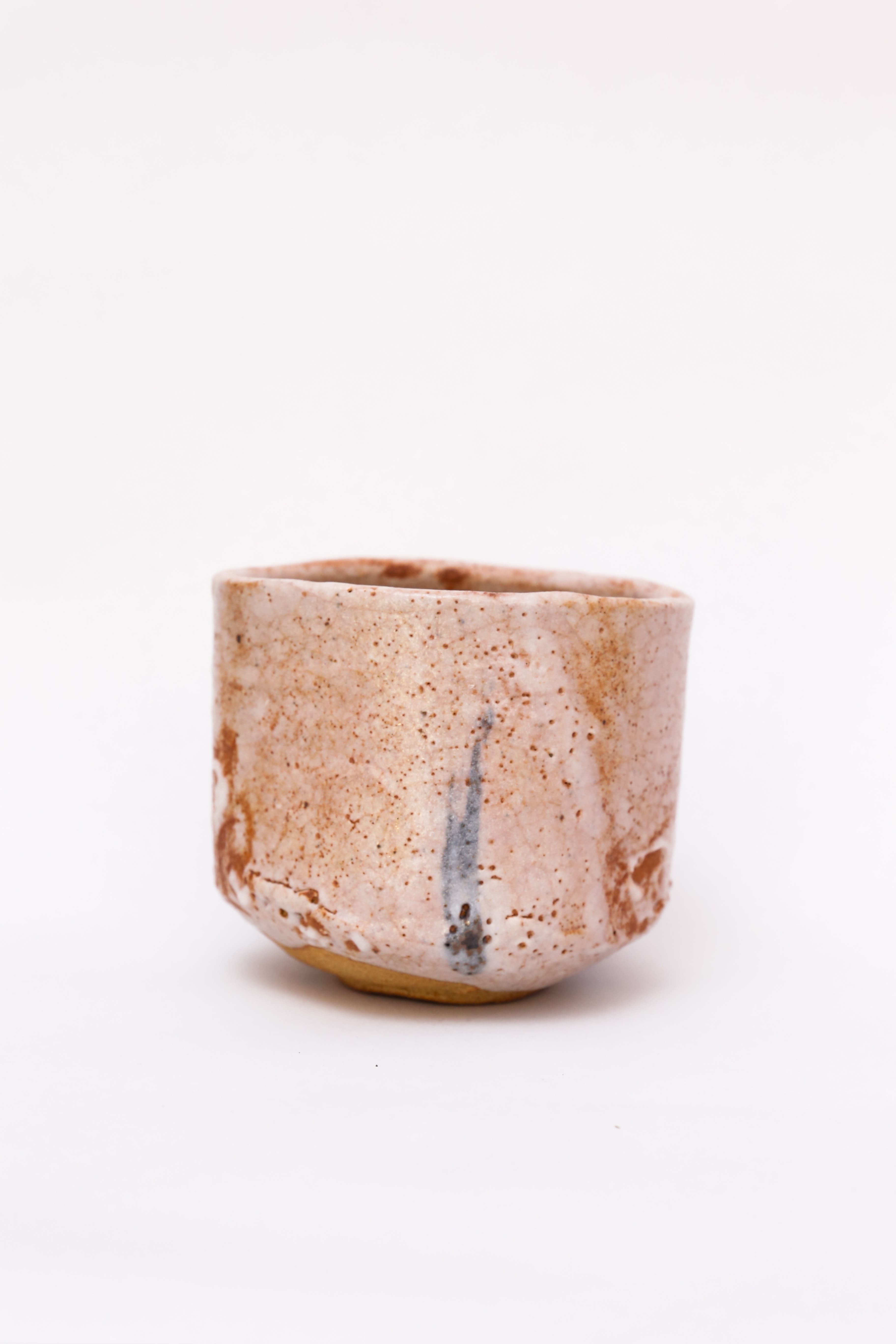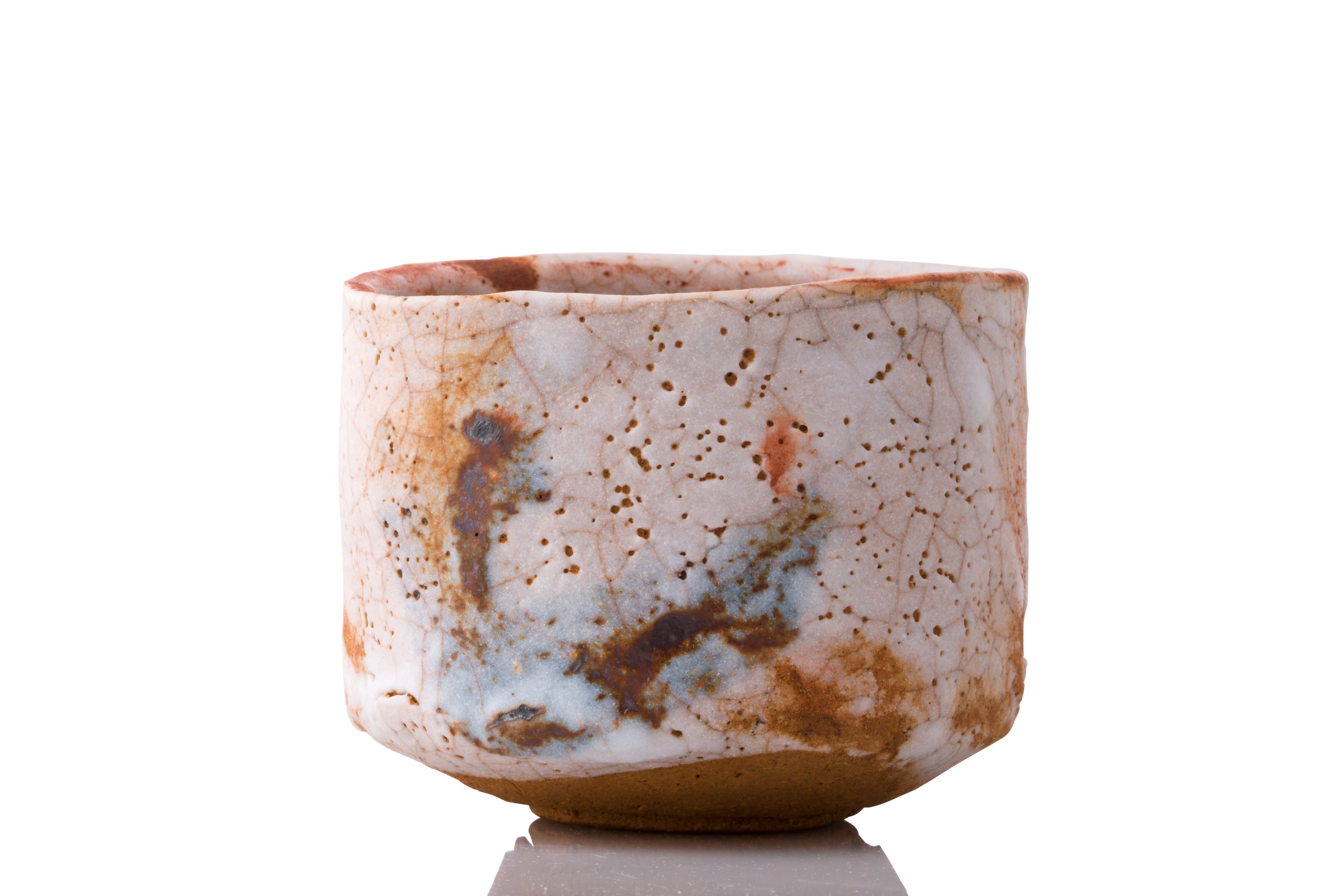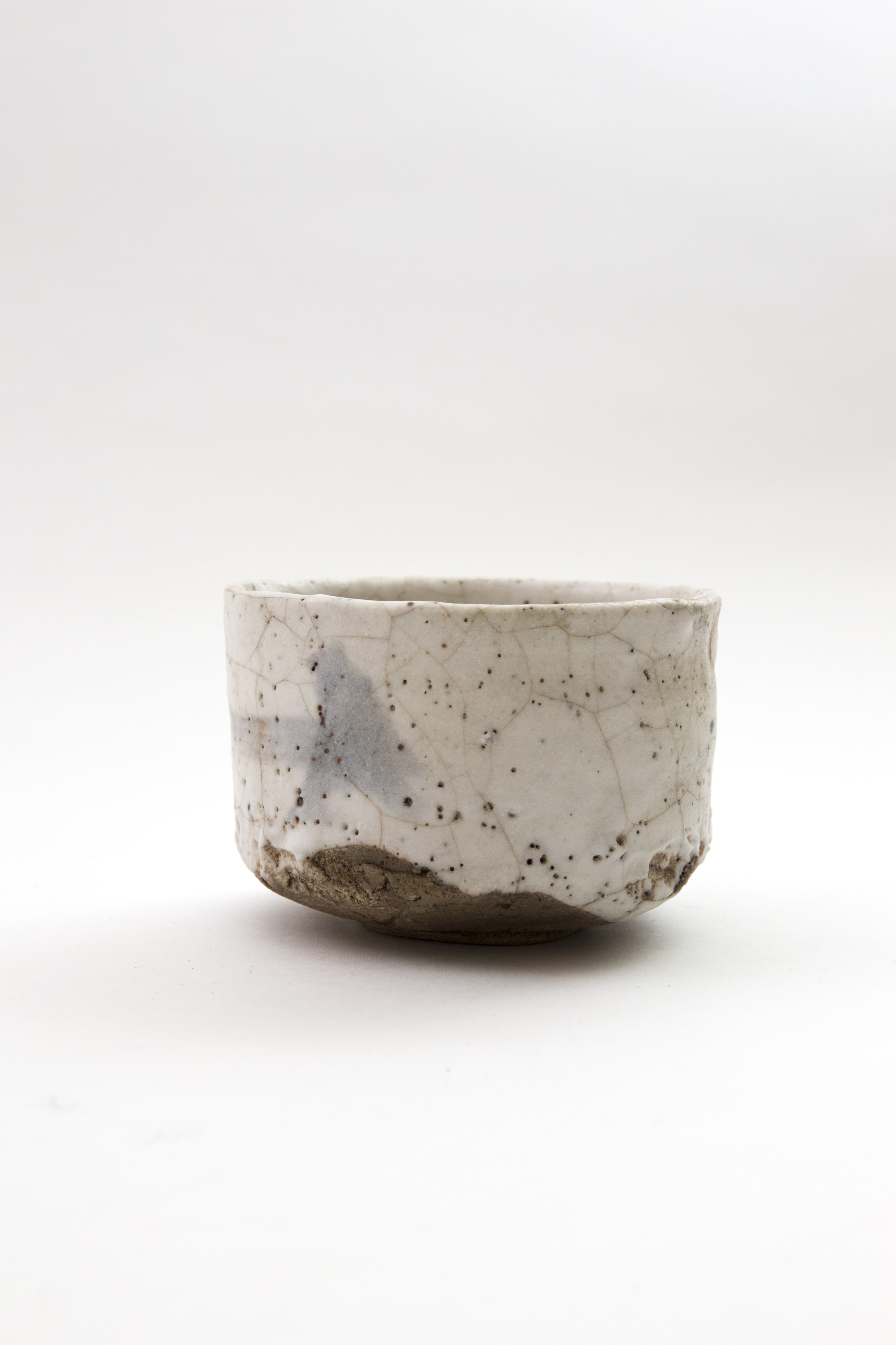
Shino glaze was first developed in the Momoyama period (1568 – 1600).
The main characteristic of Shino Glaze is of a satin-like white color, occasionally with bright, red – orange or black spotting, a result of carbon trapping in the firing process.

Shiro Tsujimura, Shino Red Bowl C10401
The glaze, composed primarily with feldspar, is the first white glaze used in Japanese ceramics.

Shiro Tsujimura, Shino Sake Cup, C1353P
Usually in firing a Shino glaze, the potter utilizes an anagama kiln and Shino glaze techniques gave birth to oribe glaze later on.
Shino glaze ranges in characteristics of milky-white to orange and sometimes with black and grey spotting (characteristic of carbon trapping)

Shiro Tsujimura, Shino Tea Bowl, C8585
Shino firing tends to use lower temperatures in comparison to celadon and porcelain firing, but fires for a longer period of time with a slow cooling process.
There are many different classes of shino glaze and firing. Some potters formulate the glaze and time the firings for different results, an example of this would be crawling.

Shiro Tsujimura, Shino Tea Bowl, C19746
Crawling is a result of cooling too fast or of the glaze not fitting properly to the clay body. When the artist uses crawling, it creates small bare spots on the surface of the piece, making visible the bare clay body beneath.

Shiro Tsujimura, Shino Tea Bowl, C19750
This technique creates an interesting visual and is likened to that of an orange peel or of beads
If you are interested in learning more on Shino glaze or on artist Shiro Tsujimura, browse our website for available works or send us an email!


